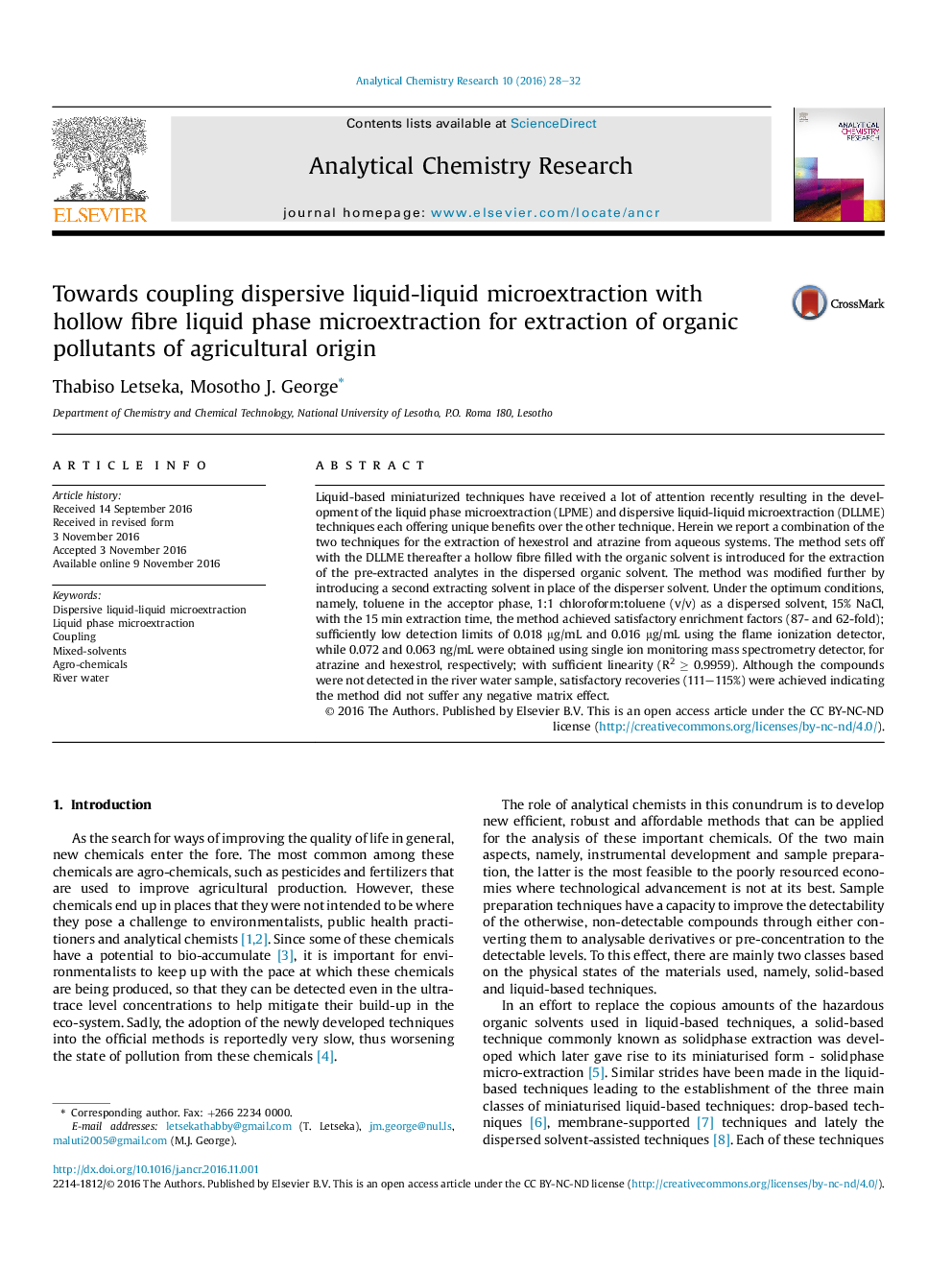| Article ID | Journal | Published Year | Pages | File Type |
|---|---|---|---|---|
| 5131843 | Analytical Chemistry Research | 2016 | 5 Pages |
â¢Coupling of DLLME with hollow fibre LPME for extraction of hexestrol and atrazine from aqueous samples.â¢Replacing the dispersing solvent in DLLME with the co-extracting solvent for improved extraction efficiency.â¢Improved extraction rates for the HF-LPME approach.â¢Determination of hexestrol and atrazine from river water sample.
Liquid-based miniaturized techniques have received a lot of attention recently resulting in the development of the liquid phase microextraction (LPME) and dispersive liquid-liquid microextraction (DLLME) techniques each offering unique benefits over the other technique. Herein we report a combination of the two techniques for the extraction of hexestrol and atrazine from aqueous systems. The method sets off with the DLLME thereafter a hollow fibre filled with the organic solvent is introduced for the extraction of the pre-extracted analytes in the dispersed organic solvent. The method was modified further by introducing a second extracting solvent in place of the disperser solvent. Under the optimum conditions, namely, toluene in the acceptor phase, 1:1 chloroform:toluene (v/v) as a dispersed solvent, 15% NaCl, with the 15 min extraction time, the method achieved satisfactory enrichment factors (87- and 62-fold); sufficiently low detection limits of 0.018 μg/mL and 0.016 μg/mL using the flame ionization detector, while 0.072 and 0.063 ng/mL were obtained using single ion monitoring mass spectrometry detector, for atrazine and hexestrol, respectively; with sufficient linearity (R2 â¥Â 0.9959). Although the compounds were not detected in the river water sample, satisfactory recoveries (111-115%) were achieved indicating the method did not suffer any negative matrix effect.
Graphical abstractDownload full-size image
